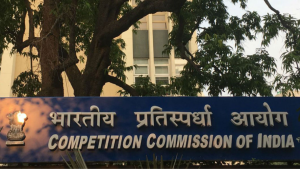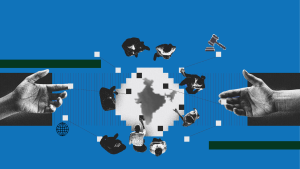

Confronting the Digital Divide in Virtual Courts
Many courts have expanded the use of video conferencing in hearings and online services such as E-Filing in response to the current lockdown. However, such use of technology to enable the delivery of justice should not end with the end of the lockdown. Further expansion of digital services can help increase access to justice in India, and help the judiciary reduce delays and backlog. This will be crucial when courts re-open in the post-lockdown period whensocial distancing norms may still continue. The justice system must therefore build on the technological advances made during this period.
However, migrating entirely to natively digital processes can alienate large proportions of Indian society due to the significant digital divide in India. Data shows that while access to the internet has grown rapidly in recent years, is still not available to all Indian citizens. To provide all citizens with effective access to justice, courts must make provisions to overcome the digital divide. This divide could be because of:
- Lack of access (especially private access) to smartphones or any other means of accessing the internet;
- Lack of digital literacy;
- Language barriers because citizens often cannot speak, or are not literate in, the official languages of the state they live in;
- Physical disabilities; or
- Poor network coverage.
There are several possible solutions to address these issues, but given that many of them are often present in the same context, solutions will have to be context-specific. It is important to emphasise that the undergoing digitisation of the Indian justice system must address the needs of all citizens, irrespective of their access to personal digital devices, or familiarity with them. The obvious solution of expanding the traditional physical component of the judiciary by investing in more personnel and infrastructure is still necessary. However, employing the following approaches can ensure that the digital divide does not leave people behind.
Design
Digital processes themselves should be designed to not exclude those who are not familiar with computers or the internet. These processes should as far as possible, to be easy to use, with step-by-step instructions for all users. Great care must be taken in interface design to ensure that all symbols and visual aids used are well-understood across varied cultural and linguistic contexts in India. Following stringent accessibility standards would ensure that people with physical challenges can use virtual courts.
Interpreters
The language barrier can be overcome with interpreters, who would need to be familiar with the official languages of the jurisdictions they serve, as well as English. Such interpreters can be used across video conferencing, making it easier for courts to employ interpreters who can assist citizens across many jurisdictions.
Phone assistance
Gaps in digital literacy can be addressed by providing assistance via phone. Trained professionals can guide users through processes over phone calls. Similar services are offered as part of the UK’s ‘Assisted Digital’ service, which supplements the provision of digital services by the UK government, including their courts and tribunals.
To ensure that these approaches succeed, the judiciary must also incorporate feedback and public opinion, as well as the feedback of important and frequent users such as non-judicial court staff and lawyers, into the improvement of digital services. It is essential that digital services serve citizens’ needs to the greatest extent possible, and that they are re-designed, refined, or replaced as and when it is necessary to do so.
To read more about the Justice Platform visit: https://www.dakshindia.org/next-generation-justice-platform/
The views expressed in this article are solely those of the author’s and they do not represent the views of DAKSH.

Siddharth MandrekarRao
RECENT ARTICLES


Testing the Waters: Pre-Implementation Evaluation of the 2024 CCI Combination Regulations

Not Quite Rocket Science

Administration of justice needs an Aspirational Gatishakti

-
Rule of Law ProjectRule of Law Project
-
Access to Justice SurveyAccess to Justice Survey
-
BlogBlog
-
Contact UsContact Us
-
Statistics and ReportsStatistics and Reports
© 2021 DAKSH India. All rights reserved
Powered by Oy Media Solutions
Designed by GGWP Design